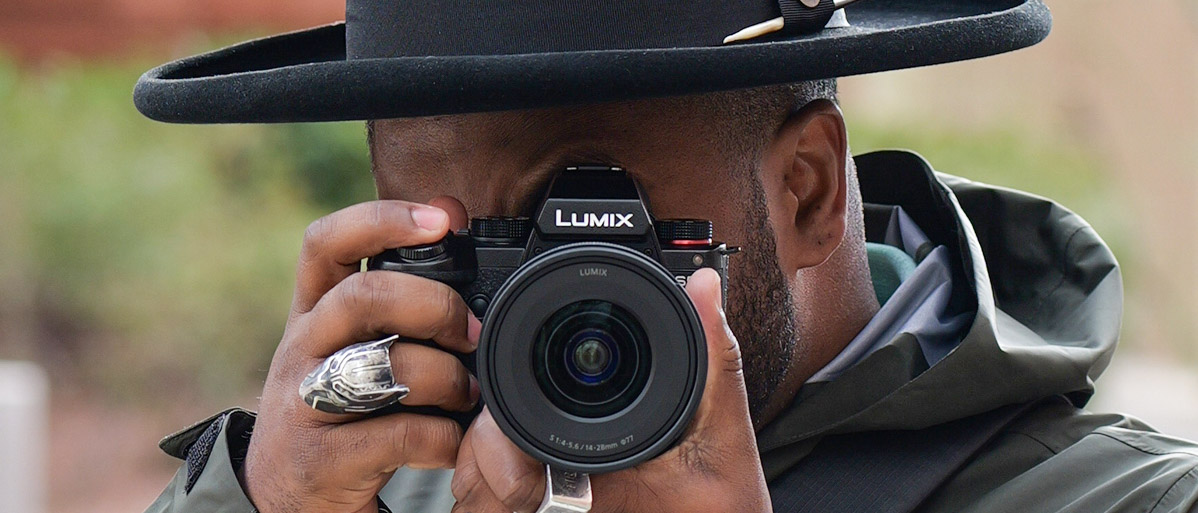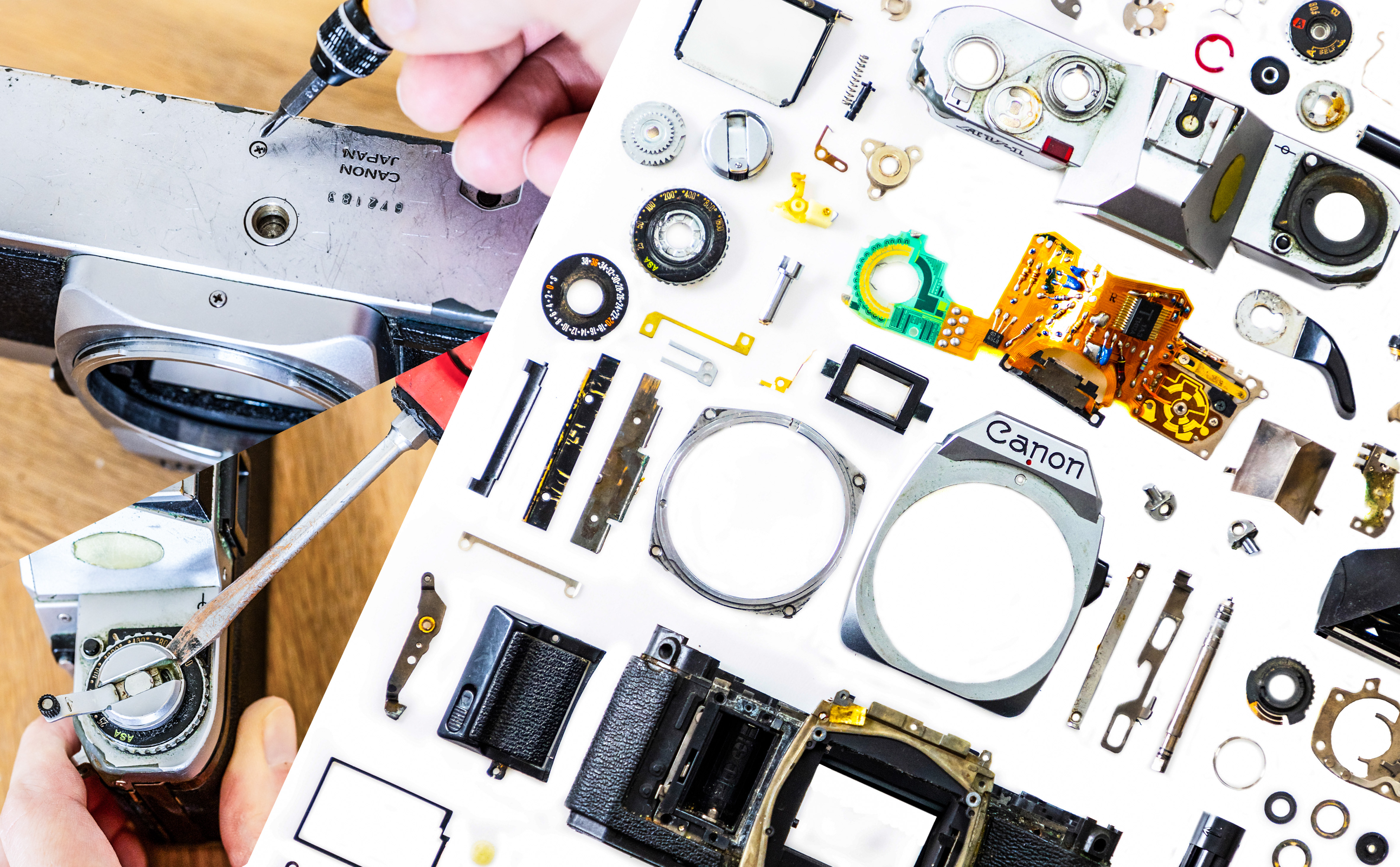Digital Camera World Verdict
Building on the solid foundation of the original LUMIX S5’s tough compact frame, class-leading 5-axis in-body image stabilization, and excellent color science, the LUMIX S5 II didn’t need any significant overhauls. However, the addition of phase detection autofocus brings the S5 right in line with some of the best hybrid cameras money can buy. We could be looking at a camera of the year contender.
Pros
- +
Value for money
- +
Best-in-class stabilization
- +
Professional video functionality
- +
Unlimited recording
- +
Filmic image quality
Cons
- -
No tally lights
- -
No CF Express slot
- -
Flip-out screen blocked by cables
Why you can trust Digital Camera World
As someone who’s used the LUMIX S1 since its launch in 2018 and the original LUMIX S5 since 2020, I’ve watched LUMIX full-frame steadily grow into a system that has every right to be revered among photographers and videographers. The one thing holding it back from capturing the attention of the masses was the contrast-based Depth-from-Defocus autofocusing system that Panasonic developed and championed for years, despite much of the competition adopting phase-detection-based AF setups.
Uncharacteristically late to the innovation party, Panasonic is aiming the phase hybrid AF-powered LUMIX S5 II squarely at “Creators”. You know, that annoying tribe of people who make content for a living or a hobby, in the hope of someday turning it into a career. I can say that because I’m one of those annoying people. To tick the right boxes the S5 II needs to be able to deliver beautiful stills that are easy to edit and transfer off the camera on the go. It also needs to be able to capture a variety of video content; from self-shot presentations to robust video files that can be graded heavily, to slow-motion clips, time-lapses, and more.
Entering the market with a lot of hype to live up to isn’t easy, but does the LUMIX S5 II deliver? Let’s get into it.
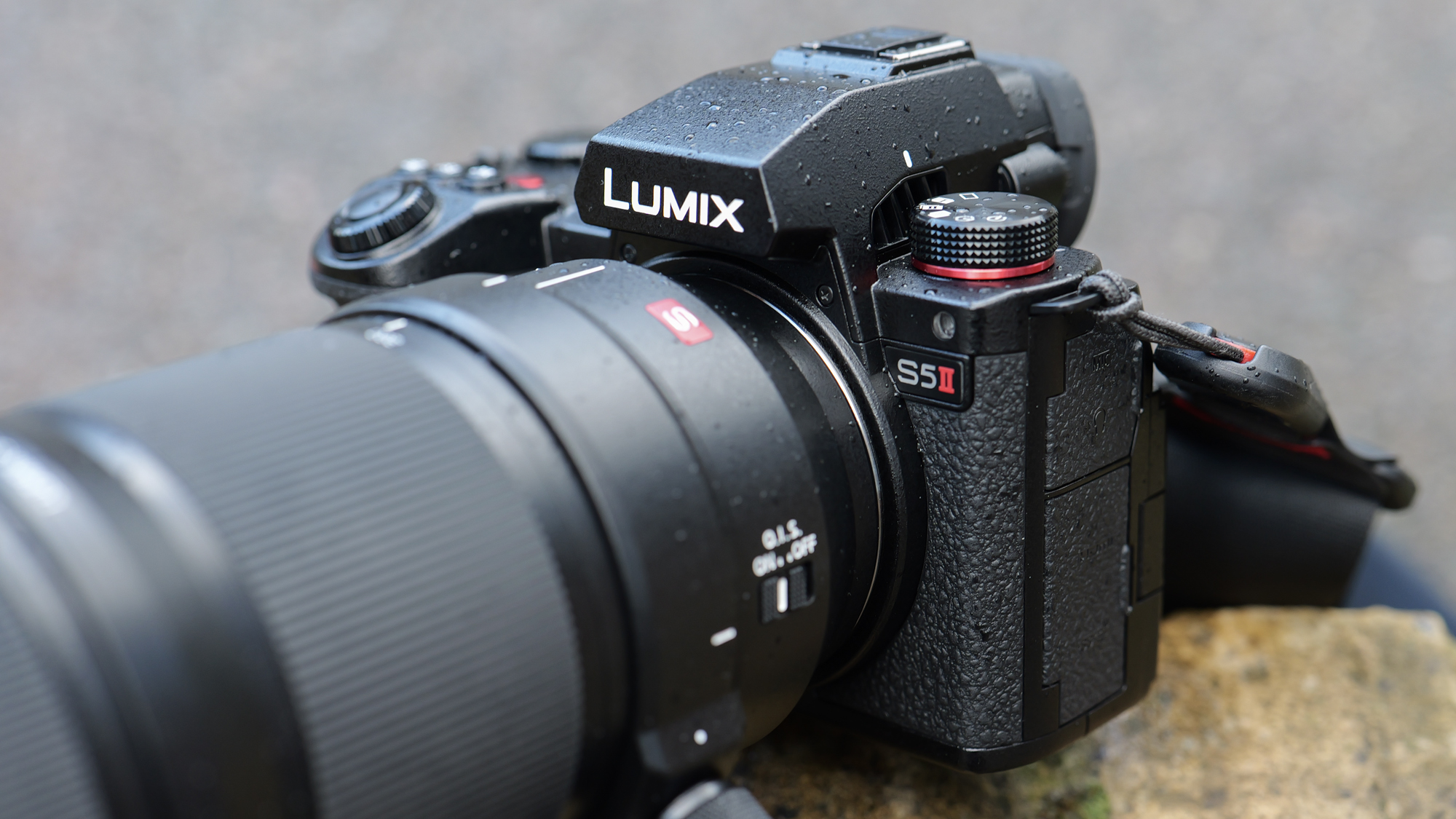
Panasonic Lumix S5 II Specifications
Sensor: 24.2MP CMOS sensor without Low Pass Filter
Image processor: Co-developed with L2 Technology
AF points: 779-point Phase Hybrid AF
Dual Native ISO: Auto/Low/High
ISO range: ISO100-51200
Max image size: 6000x4000L (RAW, JPEG), 96MP High Resolution Mode (RAW, JPEG)
Metering modes: 1728-zone multi-pattern sensing system, centre-weighted, spot
Video: 6K (Full-sensor readout)/29.97/25/24/23.98p, 5.9K/29.97/25/24/23.98p, C4K/60/50/30/24p
HFR: C4K/47.95/48p, 4K/47.95/48p, 3.3K/47.95/48p, FHD/180/120/100/60/30/24p
Viewfinder: EVF, 3.68m dots
Memory card: 2 x SD/SDHC/SDXC (UHS II)
LCD: 3-inch vari-angle touchscreen, 1.84m dots
Max burst: 30fps (electronic shutter), 7 fps with AF-C (mechanical shutter)
Connectivity: Wi-Fi, Bluetooth
Size: 134.3 x 102.3 x 90.1 mm
Weight: 740g (Body, Hot Shoe Cover, Battery, Card x 1)
Panasonic Lumix S5 II Key features
A newly designed 24.2-megapixel full-frame CMOS sensor is housed inside the LUMIX S5 II. It’s the same resolution as the original S5, but it’s different in a key way, it now incorporates a 779-point phase hybrid autofocusing system. It’s a hybrid system because it also utilizes Panasonic’s DFD AF technology. Contrast detection tends to be more consistently accurate when taking pictures of still subjects. However, it’s not as quick or as clever when it comes to detecting and following moving subjects or recording video. Combining the two approaches effectively represents a remarkable, dare I say it “game-changing” upgrade for the LUMIX S5 II.
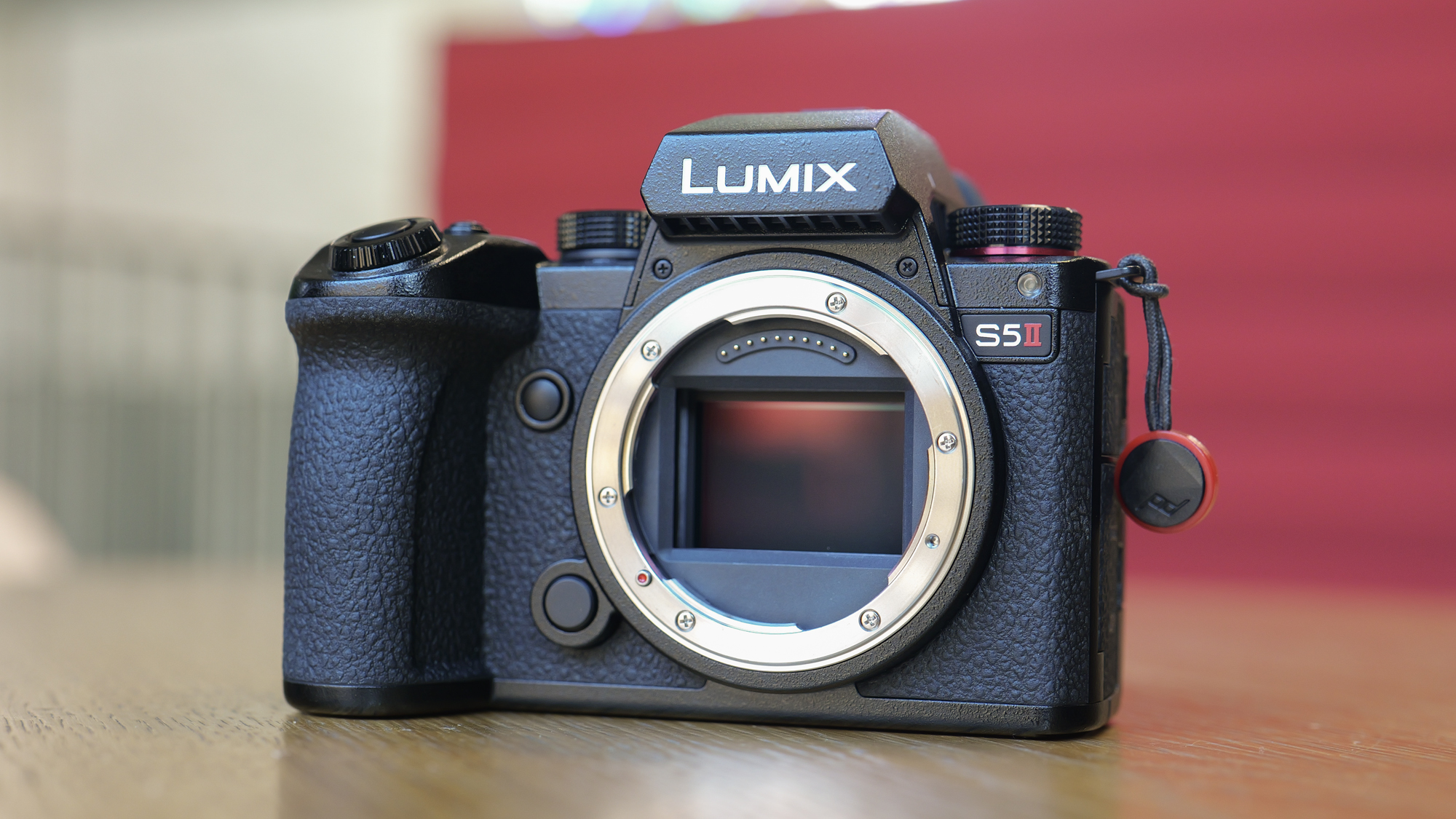
Another key upgrade for the LUMIX S5 II includes Active I.S., but what is the difference between Active I.S. and familiar boosted image stabilization modes that we’ve seen before? Active I.S. utilizes the power of an entirely new image processor, co-developed with Leica. Active I.S. deploys algorithms that can detect and anticipate camera motion, particularly when the camera operator is also moving. The S5 II can monitor the 5-axis of motion and prioritize intended movements while suppressing unwanted movement that is likely to negatively impact picture or video quality.
The new processor and sensor combo are also designed to deliver greater color depth and detail, as well as a maximum of 14 stops of dynamic range. It also has Dual Native ISO of ISO 640 and 4000, which helped the original S5 deliver clean footage and stills at higher sensitivities.
Speaking of depth, Panasonic has introduced a new function called Real-Time LUT. Not to be confused with Photo Styles, Real-Time LUT allows you to bake in the same LUTs you may use to grade your content while color grading. This time-saving trick applies to photos and videos and will appeal to people who want to achieve a specific look without having to spend extra time applying LUTs or presets at their desks.
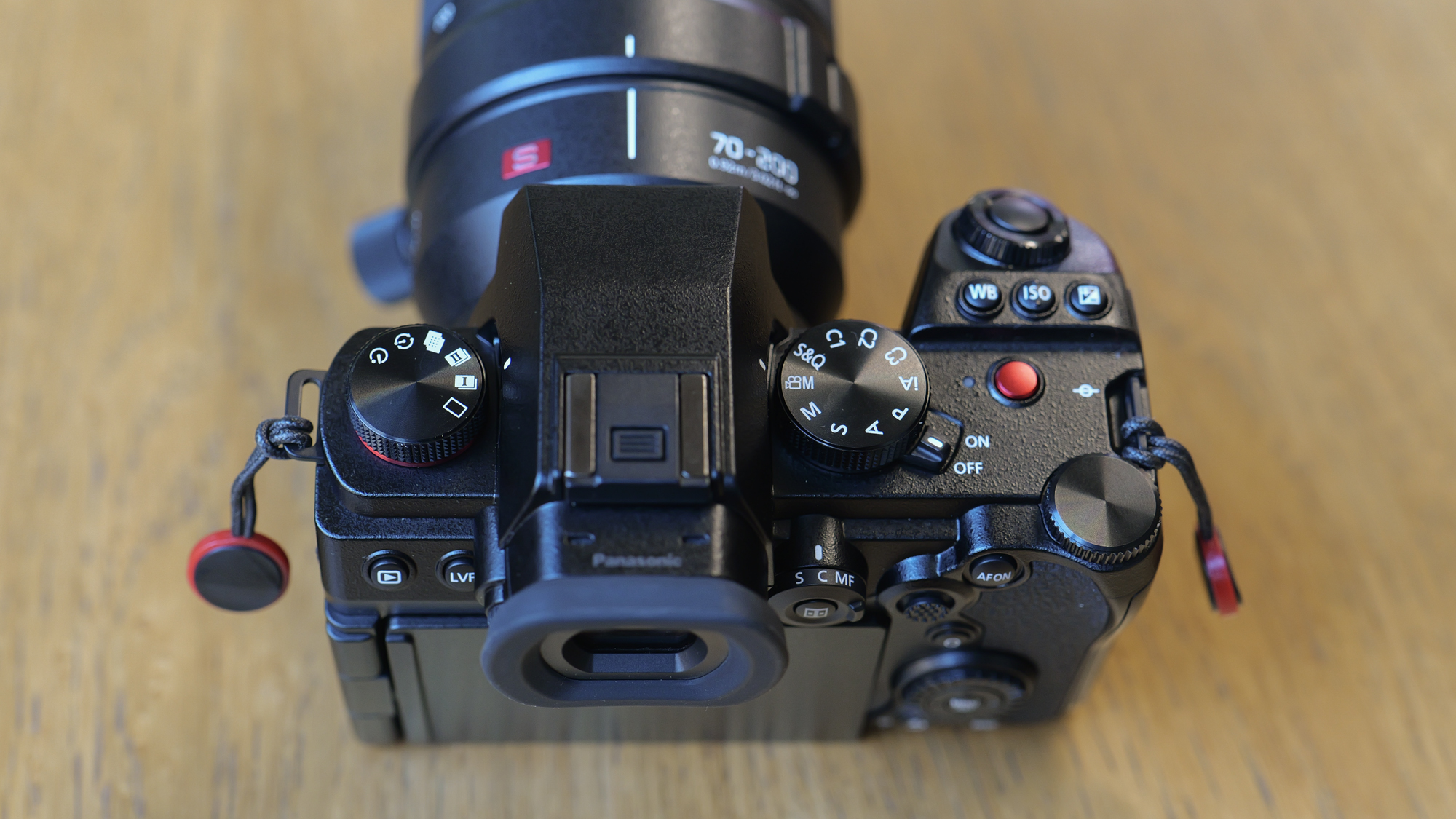
In terms of video, the S5 II is a 10-bit video specialist. Almost all of its extensive recordable video formats can be captured with a maximum of 10-bit color, including 4:2:2 10-bit C4K/4K 60p video, which has no video recording limits. The LUMIX S5 II can also record up to 4:2:0 10-bit 6K/29.97p LongGOP video in an H.265 codec, using the full readout of the camera’s sensor and producing a 5952x3968 (3:2) image.
Full sensor recording or “Open Gate” as camera manufacturers seem intent on calling it, is perfect for when you have to shoot content for multiple formats and aspect ratios. With such a large frame, you can comfortably crop a square, 4:5, or 9x16 frame for social media from videos shot this way. It can also now record up to 4 channels of 96kHz/24-bit audio when attaching a 3.5mm microphone or optional DMW-XLR1 adapter.
Panasonic Lumix S5 II Build and Handling
For a compact full-frame mirrorless camera, the LUMIX S5 II looks and feels assuredly tough, thanks to its boxy aesthetic and deep, texturized grip. At a glance, it could easily be confused for the original S5, but a quick game of spot the difference will draw your eye to the new S5 II left shoulder badge.
You’ll also notice the extra width of its viewfinder hump, expanded to house an all-new cooling system for the LUMIX S5 II. This helps to deliver practically unlimited recording in all modes. It does add some additional weight and size to the body, which is up 26g from 714g to 740g and it’s now fractionally taller by 5.2mm.
These small increases deliver some decent benefits though. Panasonic states that the S5 II has been tested to operate in temperatures as extreme as 40°C, and offers unlimited recording times at up to C4K/60p. It does have a stated recording limit of 30 minutes when recording video at its maximum 6K resolution.
However, if you change its Thermal Management setting to “High” and ok the subsequent Caution message, the S5 II will keep recording and fill whatever sized UHS-II SD cards you place in its dual UHS-II slots or until its 2,200mAh battery runs out. Of course, you could keep powering the S5 II via its USB 3.2 Type-C input with power delivery.
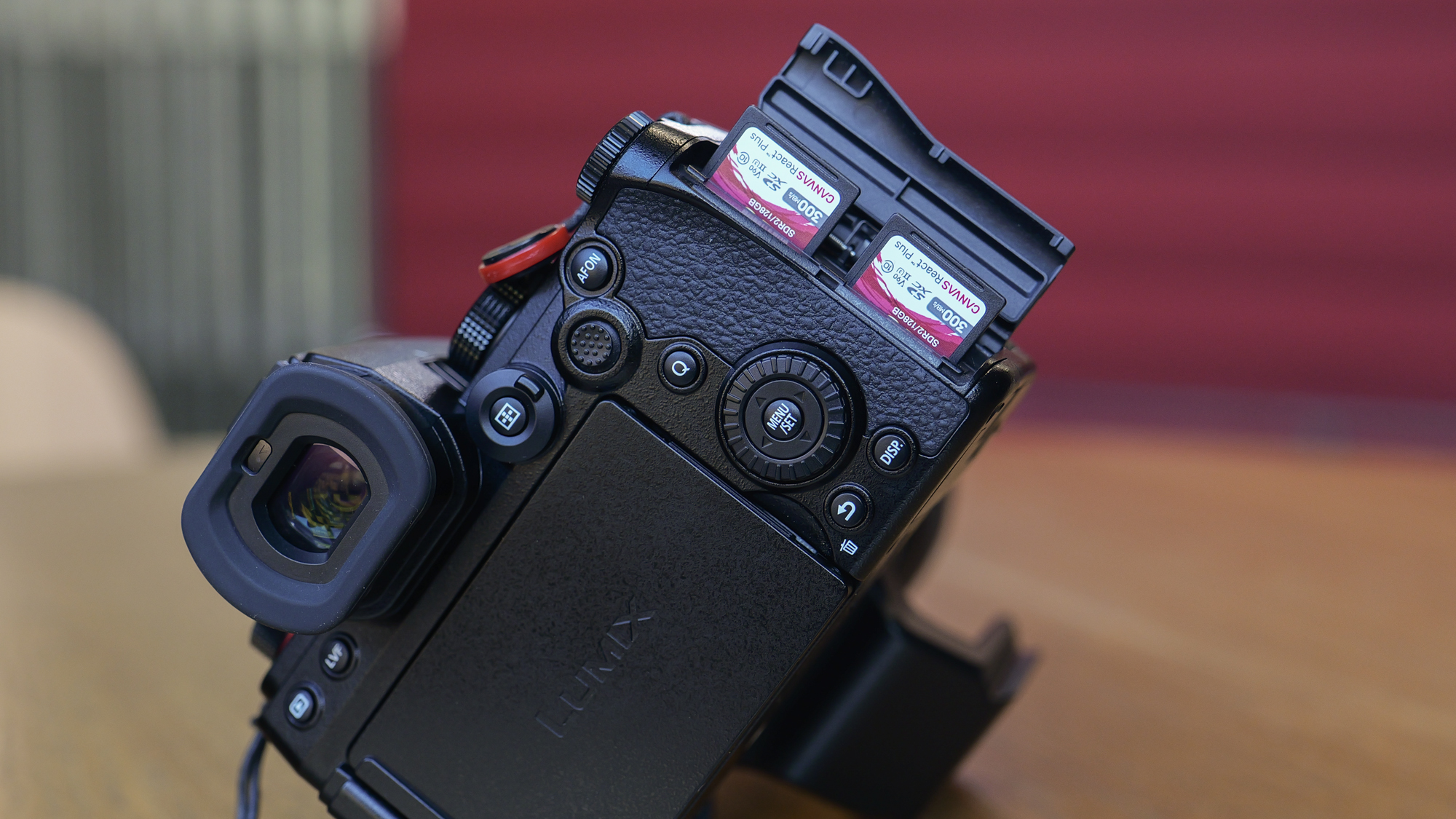
The S5 II impressively retains a degree of dust and splash resistance, despite the new fan vents on either side of the EVF. It also has a full die-cast magnesium alloy frame, providing comprehensive protection against bumps and drops.
Unlike the Sony A7IV, which costs $500/£400 more and has a partial magnesium frame, exchanging metal for tough polycarbonate plastic on its rear. Potential buyers of the S5 II will be pleased to know it is built with professional use with potentially tough conditions in mind.
Its logical button layout is identical to the original S5, with extensive options to fully customize how the camera operates. It also includes a dedicated anodized red REC button for recording videos and a dial for switching between focusing modes, as well as an 8-direction joystick for selecting focusing points.
People who regularly need to switch between photography and video will find doing so on the S5 II intuitive, although the experience would be even more seamless if the camera would maintain the settings between movies and stills modes independently. But you do have the choice of creating custom menus and up to three custom profiles on the mode selection dial.
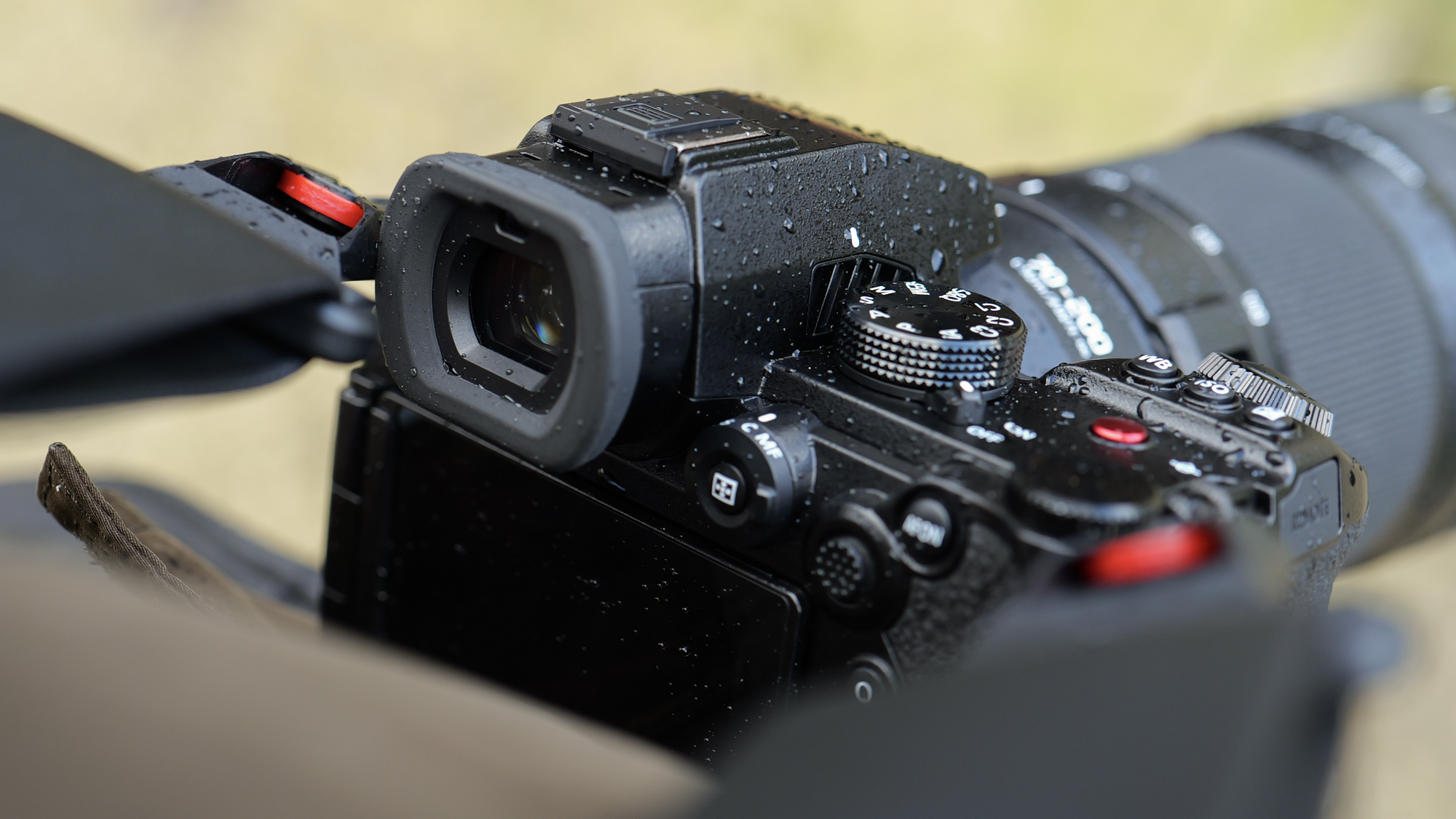
The S5 II does make a couple of small missteps in terms of build and design though. One of them is highlighted by another of its major improvements; the S5 II gains a full-size HDMI port. A very welcome addition. But, unfortunately, it didn’t also gain the ingenious tilt and flip screen that Panasonic first deployed in the LUMIX S1H and improved for the LUMIX GH6.
It appears to be the same 1,840k LCD display as the GH6, just without the brilliant mechanism. Being able to tilt the screen up and then flip it out is vital for keeping the screen clear of cables, especially large full-sized HDMI inputs. I can only imagine this was due to cost, as the S5 II undoubtedly uses the same frame and rear molds as the original S5. But it’s genuinely frustrating to have cables prevent you from easily flipping or seeing the screen. Particularly while self-shooting.
This leads us to the next issue I have with the design of the S5 II. It doesn’t have any tally lights. This is important for creators on or behind the camera, as well as other people being filmed. The LUMIX S5 II does have a recording frame indicator that can be switched on or off, but with a bunch of cables and the seal doors blocking the screen it's not easy to see. It also means you can’t see the time you’ve been recording for at all. No tally light and keeping a now surpassed and awkward flip-out screen design aren’t deal breakers by any means, but those two updates would have made a practical improvement to how well this camera operates.
Nit-picking, I’m also disappointed to not see a hole on the base of the S5 II near the standard tripod thread to house an anti-rotation pin. Anti-rotation pins ensure that cameras don't turn slightly while fixed to professional tripod plates. The S1H and GH6 have all of these small pro-leaning design features in them, why are we taking small backward steps with the latest and potentially greatest camera from LUMIX so far?
With all of that said, you can tether the S5 II to a compatible smartphone or tablet via the LUMIX Sync app, which works great and lets you monitor and control camera settings via WiFi and Bluetooth.
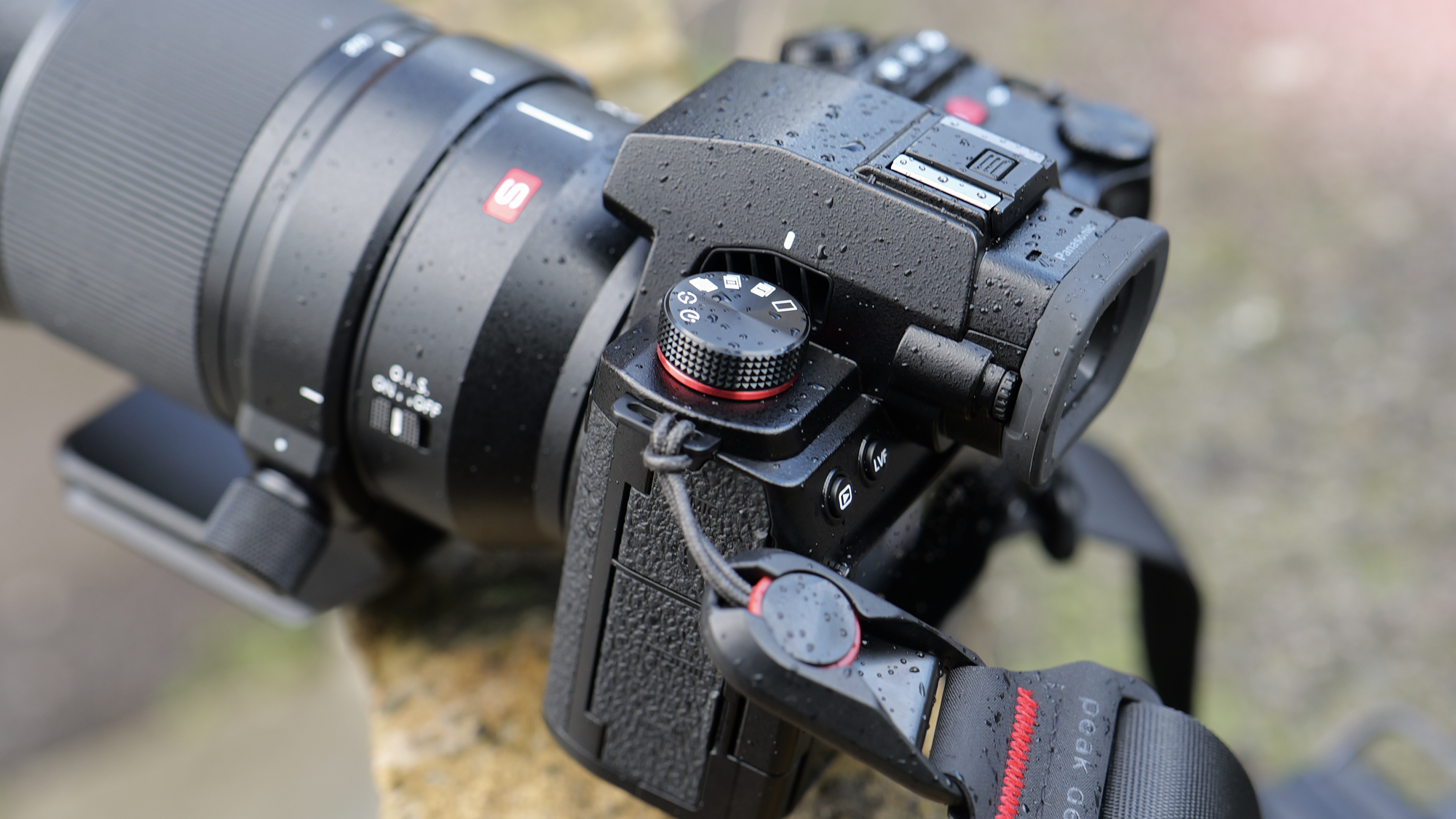
Panasonic Lumix S5 II Performance
Unfortunately, people hoping that a firmware upgrade could deliver similar focusing performance in older LUMIX cameras will be left disappointed. The LUMIX S5 II uses an entirely new image sensor and processor, which combine to deliver faster data readouts and utilize more sophisticated algorithms. The new imaging system at the core of the S5 II delivers on most of its intended promises, in full.
How good is the autofocus of the LUMIX S5 II? And how does the S5 II compare to the S5? That’s what most people want to know. For the majority of situations, the most recent LUMIX cameras; the LUMIX GH6 and LUMIX S5, are pretty reliable, if not fast. But LUMIX S5 II combines DFD technology and phase detection autofocusing to deliver a system that is a significant step up in terms of speed and consistency.
Looking through the camera’s bright 3,680k OLED viewfinder, the camera detects subjects immediately, forming a dynamic box around both humans and animals. It can also detect faces and eyes when subjects are in proximity, and it will highlight those as well. Autofocusing on the S5 II is reasonably customizable.
It will allow you to select its speed and sensitivity, you can also choose which type of focus you want. You have three choices; Human, Face/Eye, and Animal+Human detection.
The S5 II consistently and quickly identifies subjects as they enter the frame and with multiple people in the frame, you can use the joystick or tap the screen to select which person is a priority. One area of improvement though, I would like to see more options for subject recognition, such as AF detection for vehicles and birds. Fujifilm, Canon, and Sony all offer much more granular AF Subject Detection settings, so it would be good to see LUMIX add to its AF detection repertoire.
Above: Watch the face priority autofocus switch between a human face and the face of a statue.
Shooting stills, the S5 II can handle 7 fps bursts of RAW+JPEG shooting with AF-C for roughly 200 frames. If you need more speed, its mechanical shutter can do 9 fps with AF-S or 30 frames per second using its electronic shutter with AF-C. At the time of testing I was still using pre-production firmware and still, the results were impressive.
From a panning burst of a person running in flat light for bursts of 10-20 frames, the camera lost focus slightly on one or two frames. But there were still plenty of usable shots from my sequences.
Trying to photograph birds was a little tougher. Using both of the LUMIX S PRO 70-200mm lenses, F4 and F2.8, I was able to get some decent shots of birds in flight, but tracking their movement without the assistance of an algorithm tuned to predict their movement was more challenging than I’ve found when using cameras like the Sony A7IV or Fujifilm X-H2S.
But things can be improved via firmware and the competitors mentioned have enjoyed a decent head start. The fact that we’re now legitimately comparing a LUMIX to pricier cameras with some of the best AF systems available, is a positive sign of the brand’s direction of travel.

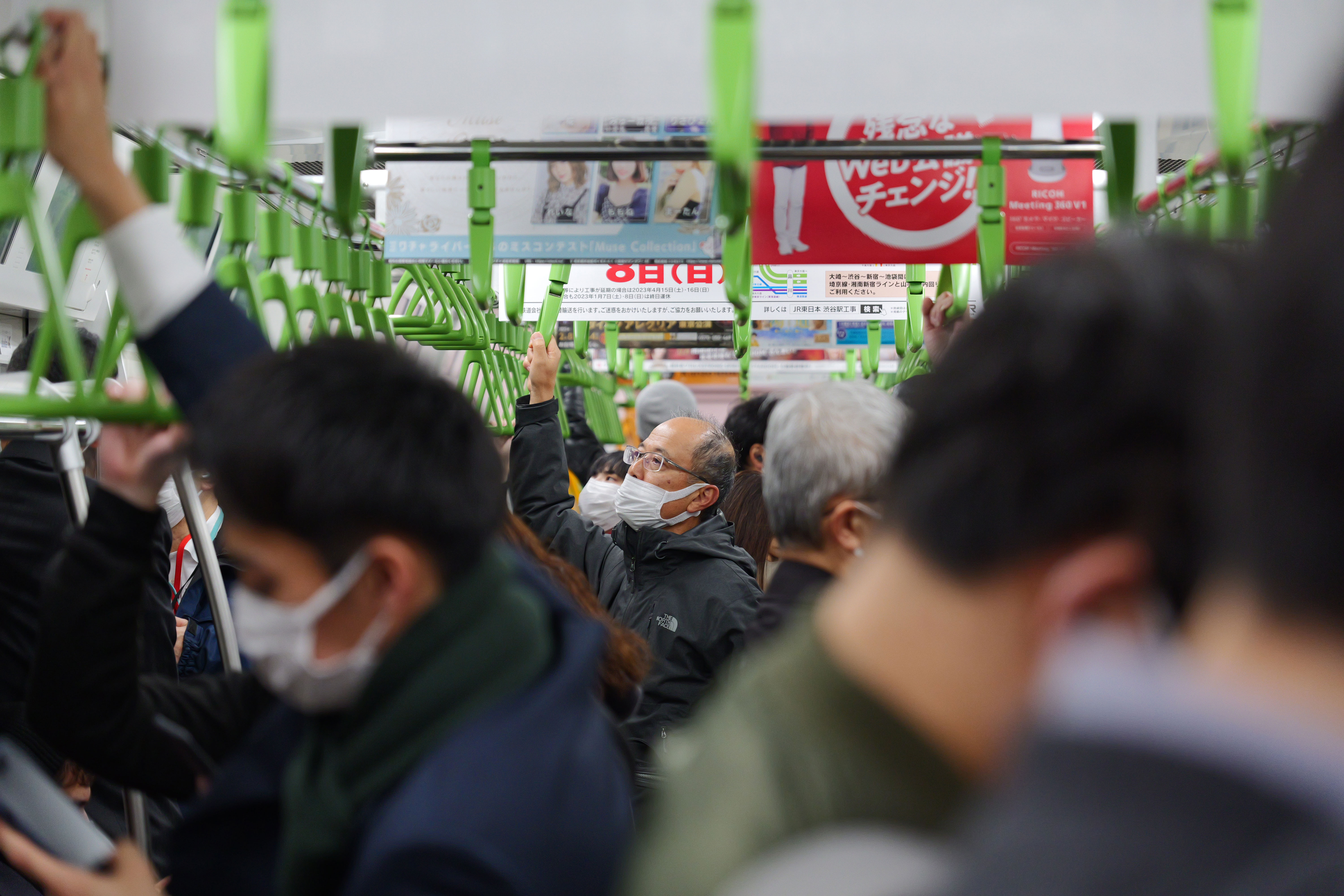
With respect to video, the LUMIX S5 II is a standout camera in its class, offering a raft of recording and video monitoring options that are uncommon at its price point. As a hybrid camera, the main competition in this bracket comes in the form of the speedy Fujifilm X-H2S and the LUMIX GH6.
The X-H2S has a slightly higher resolution 26.1-megapixel APS-C sensor, while the LUMIX GH6 has a 25.2-megapixel micro-four-thirds sensor. Due to their smaller sensor sizes, both rivals can do internal ProRes 422 HQ recording and 4K/120p video.
Those are two features that would have been amazing to have in the S5 II, but I wouldn’t trade its full-frame sensor to gain them. The LUMIX S5 II camera can be used to produce cinematic quality footage that doesn’t need any correction work in post if you’ve exposed it to your tastes and perhaps taken advantage of its Real-Time LUT feature.
However, its 10-bit files are robust enough to tune saturation in standard profiles, as well as recover moderately blown highlights and raise underexposed shots without the quality of your clips breaking down. It also comes with a full V-Log as standard and allows you to pre-load up to 10 .cube LUT files for assistance when shooting flat footage.
There are other popular assist features included too, such as; Luminance Spot Metering, Waveform/VectorScop, Anamorphic Desqueeze Display, Synchro Scan, and more. These extras are part of the package that makes the S5 II such an enjoyable camera to use for video work because it’s designed with video creators in mind.

Beyond what was mentioned about the newly introduced “Active I.S.” in the features section, there’s not much to say about the image stabilization in this camera. The LUMIX S5 II image stabilization remains best-in-class, for now. And it will allow you to get away with not using a gimbal or a tripod in a lot of instances. If you’re trying to pack light or can’t use additional stabilization, the S5 II’s 5-axis IS have you covered. Its ability to steadily hold a frame is beyond black magic.
Above: Watch the Lumix S5 II's new active image stabilization in action on a bumpy car journey.
Lastly, due to the fan, the battery life on the S5 II isn’t quite as good as that of the LUMIX S5, unless you operate the camera completely in Power Save mode. But there has to be some trade-off somewhere. As long as you have 2-3 fully charged batteries, you should have no problem getting a full day’s use from this camera.
When I got caught short, because I’d forgotten to charge my spare battery, it was handy being able to plug my BioLite Charge 80 power bank straight into the LUMIX S5 II’s Type-C port and keep going. Any 5V-9V power bank should do the trick in a pinch!

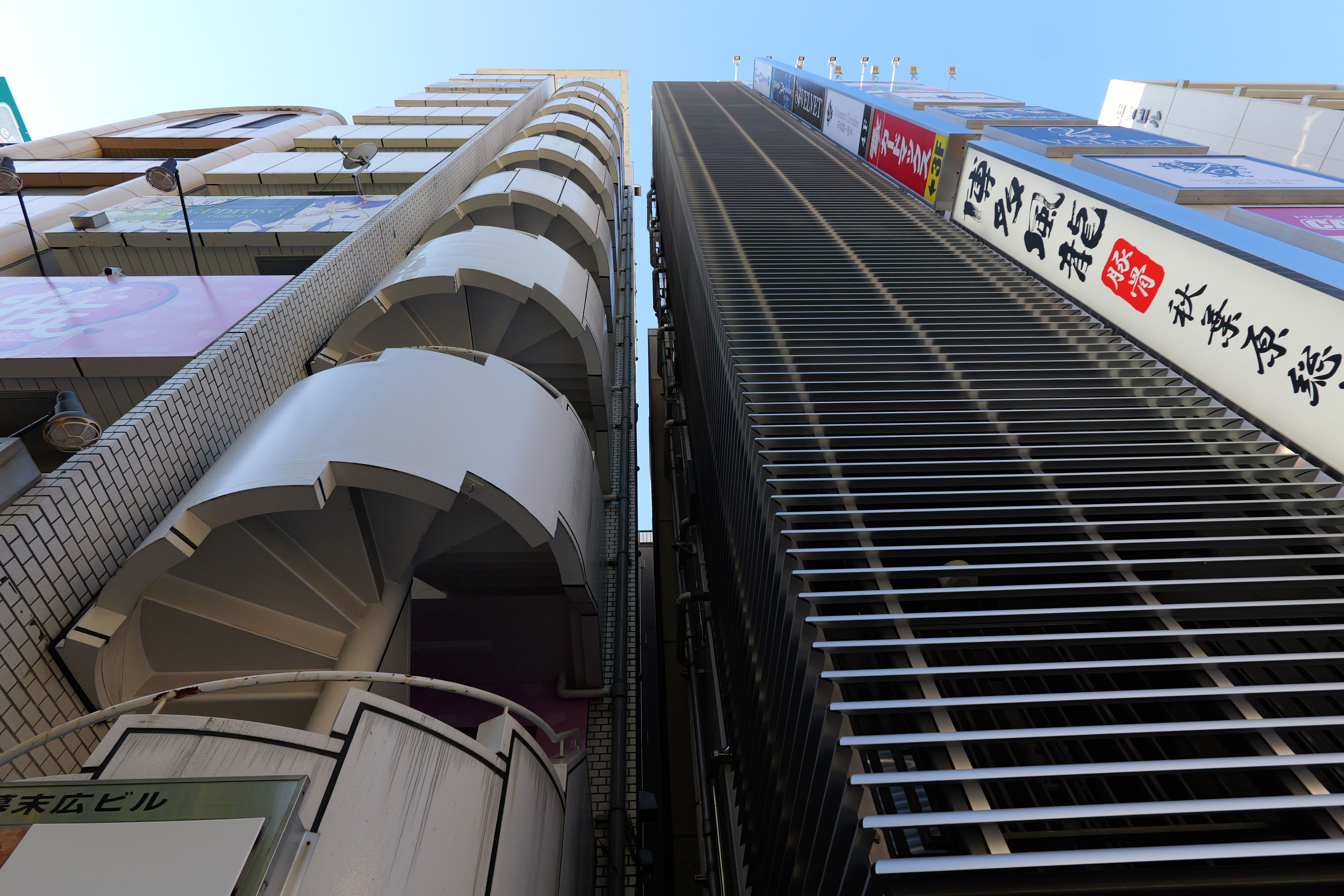
Panasonic Lumix S5 II Lab results
For our lab data comparison, we compared the Panasonic S5 II to three full-frame mirrorless rivals with similar price tags: the Canon EOS R6 Mark II, Nikon Z 6II, and Sony a7 IV.
We test resolution using Imatest charts and software, and dynamic range and signal-to-noise ratio with DxO Analyzer.
Resolution (line widths/picture height):
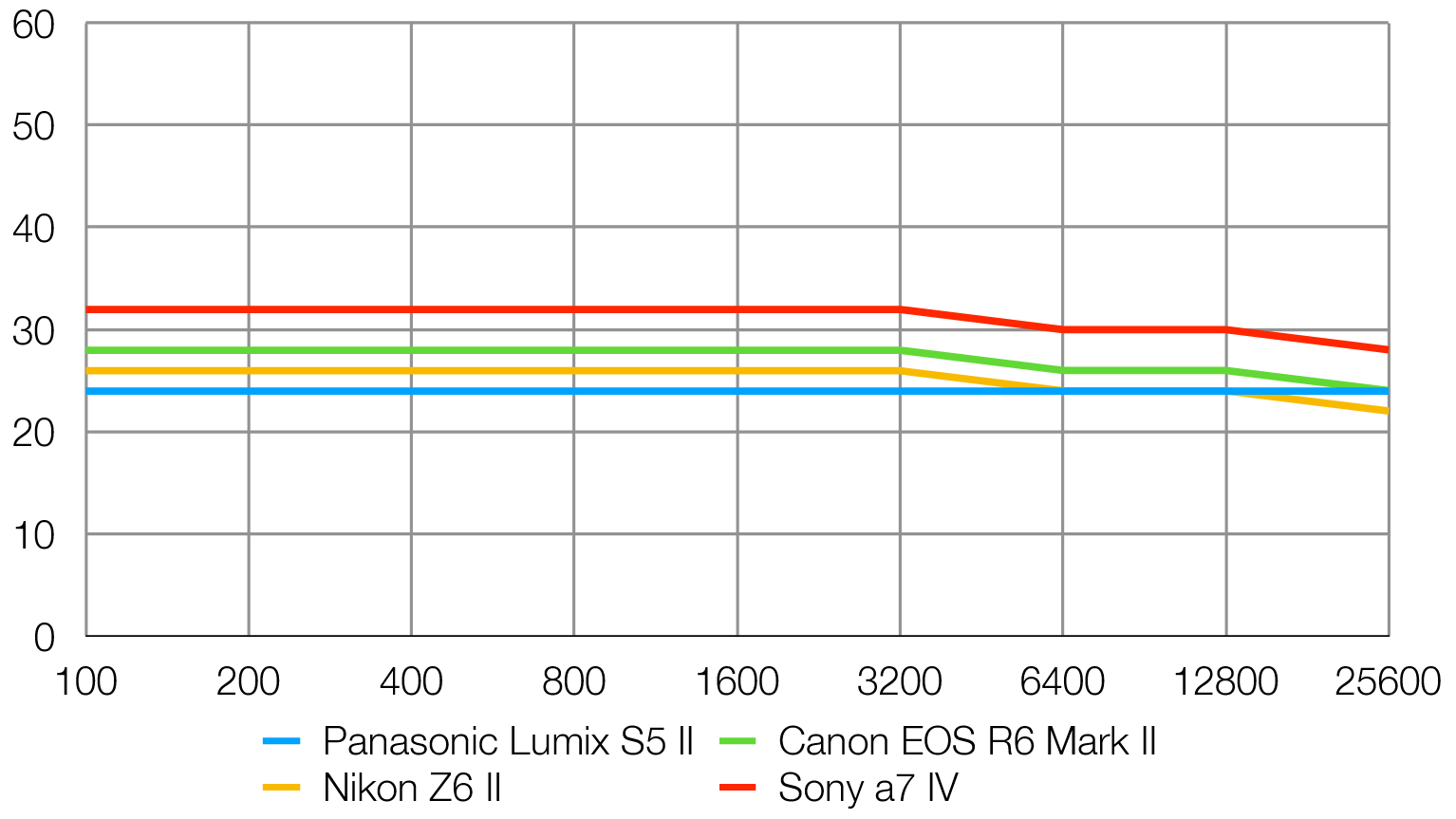
With 33MP on tap, it's no surprise the Sony a7 IV is the camera to beat in this sector if outright detail capture is of particular importance to you. The S5 II's images are a little more prone to exhibiting moiré than those from the Canon and Nikon cameras, which has the effect of slightly obscuring the resolution patterns on our test chart. Consequently the S5 II scores slightly lower than the EOS R6 II and Z6 II, despite it having essentially the same sensor resolution.
Dynamic range (EV):
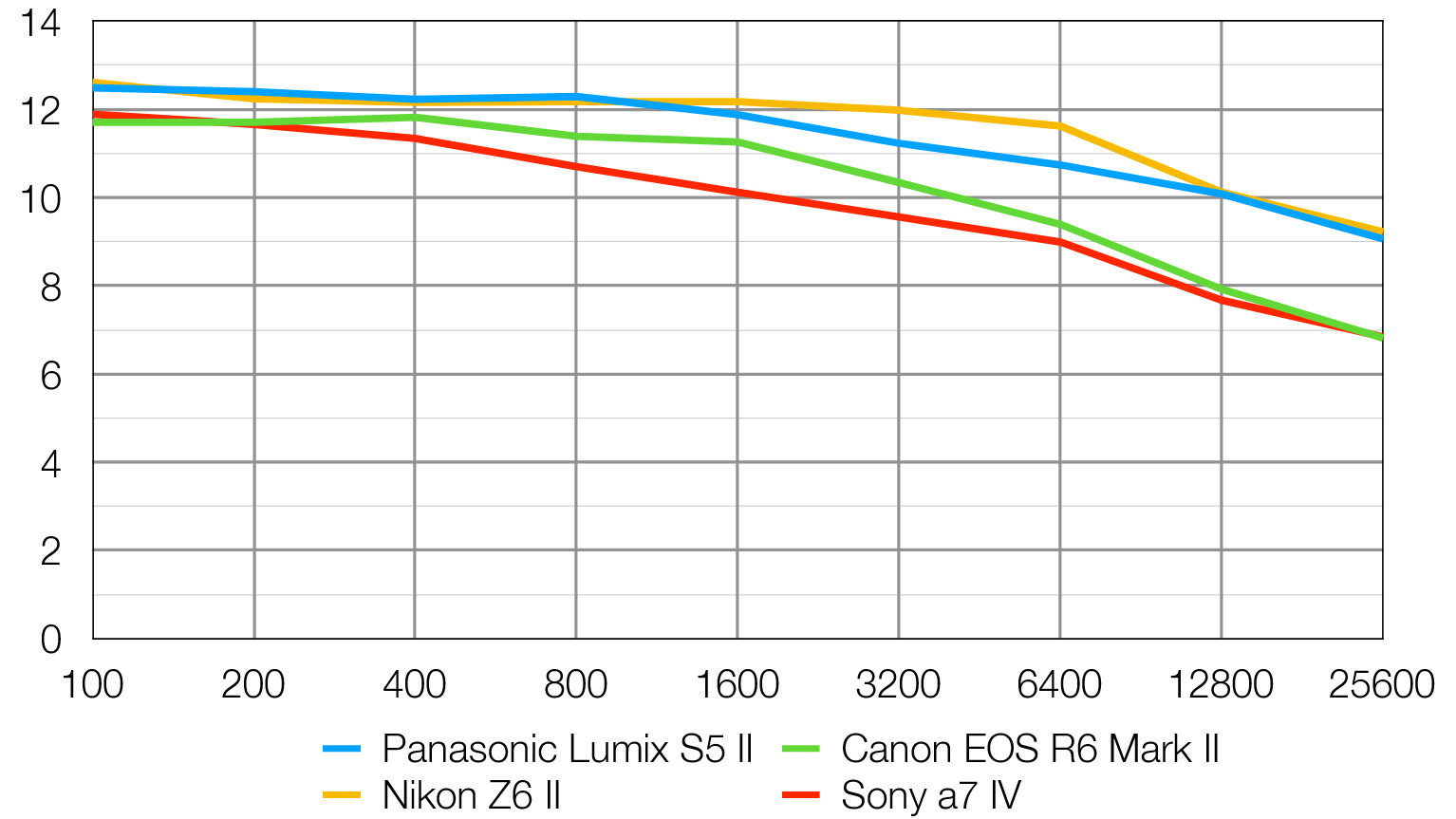
The S5 II is strong when it comes to capturing dynamic range, almost matching the class-leading Z6 II throughout the tested sensitivity range. At high ISOs the Panasonic can capture as much as 2EV more dynamic range than the Canon and Sony cameras.
Signal to noise ratio (decibels):
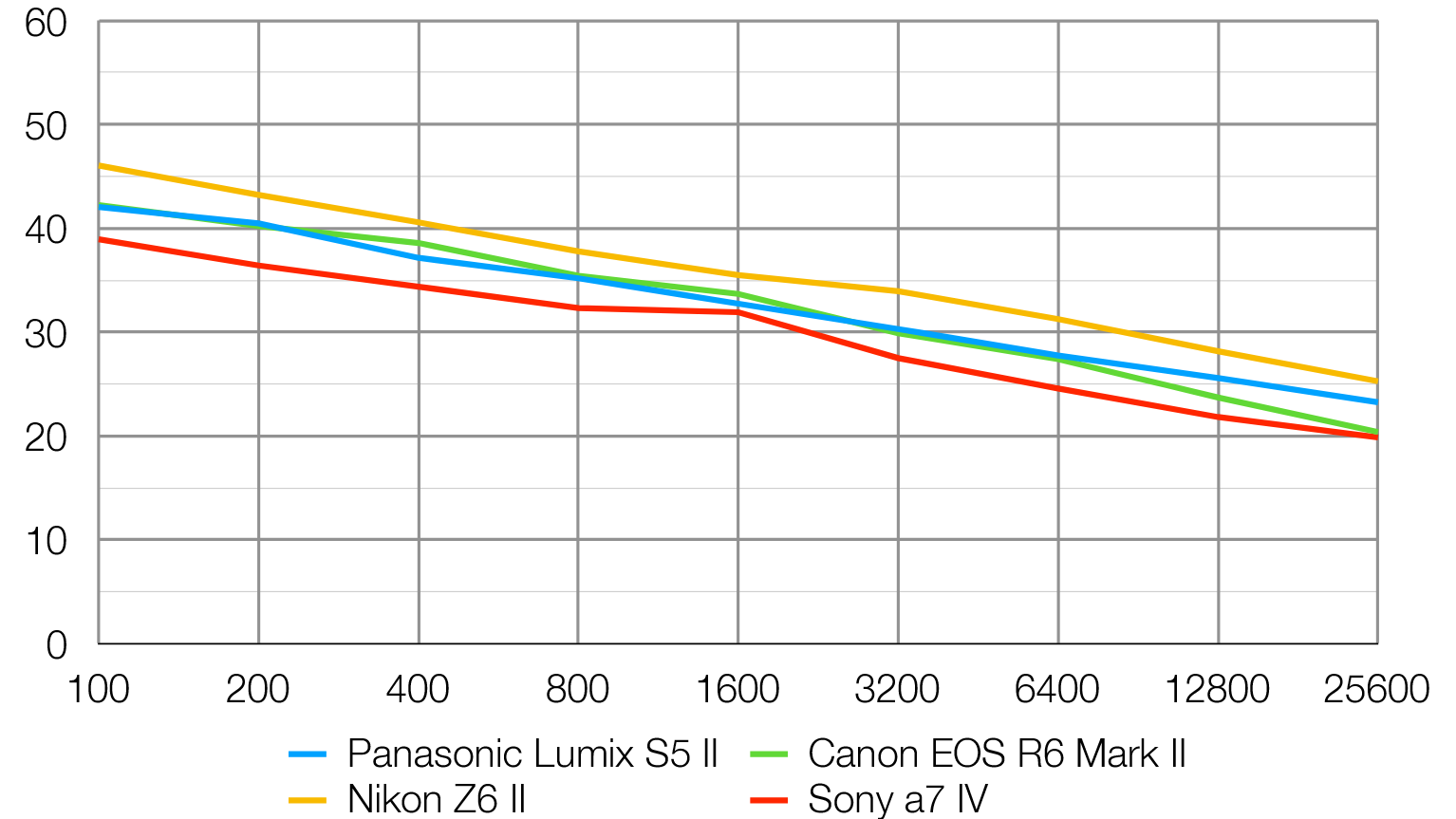
This test compares the amount of random noise generated by the camera at different ISO settings as a proportion of the actual image information (the 'signal'). Higher values are better and we expect to see the signal to ratio fall as the ISO is increased.
The S5 II's images exhibit very similar levels of noise to those from the EOS R6 II, though images from the Z6 II are marginally cleaner across the tested sensitivity range. Perhaps inevitably, the extra megapixels crammed onto the Sony's sensor means it's images contain a little more noise than those from the arguably more light-sensitive 24MP cameras on test.
Panasonic Lumix S5 II Verdict
Should I buy the Lumix S5 II? Is it important to have a weather-sealed camera with no recording limits, that is equally capable of capturing professional-level photography and video content, while shooting in a wide variety of environments?
Every S-series and GH LUMIX camera in the past five years ticks most boxes. But for some people, they’d be ruled out because of DFD autofocus, despite the brand's reputation for faithful color science and intuitive functionality. Now, those days are gone. On a level playing field, the case for the LUMIX S5 II is undeniable. It has a quality 24.2-megapixel sensor, paired with an image processor that was co-developed with Leica. It can capture rich stills at up to 30fps in E-Shutter mode and offers unbeatable image stabilization. Its phase hybrid autofocusing system matches or in some cases beats cameras above its price range. Oh, and it has a full-sized HDMI port.
By offering all of that with truly no limit 4K/60p 4:2:2 10-bit recording internally, S&Q 4K/60p and FHD/180p, as well as up to 6K, full sensor readout video recording, Panasonic have delivered a highly versatile camera for content production. Specs aside, the S5 II is easy to get familiar with and once you do, it handles like an extension of your hands. Every function is where you’d expect it to be on the body and within its menus. The kicker? You can now use EF-mount lenses with phase detection AF for stills and video on a LUMIX - via the Sigma MC-21 adapter.
At $2500/£2000, the LUMIX S5 II is astonishingly good value for money. It’s more than just a camera, it's a true tool for creators.
Read more:
• Best L-mount lenses for Panasonic, Leica and Sigma mirrorless cameras
• L-mount lens roadmap
• Best camera for professionals
• Best mirrorless camera
• DSLR vs mirrorless cameras
• The cheapest full frame cameras
• Best full frame DSLR
Jon is a gadget reviewer, content creator and influencer. He spends his time reviewing products, covering technology news, giving talks on content strategy and creating content in partnership with a wide variety of forward-thinking brands. He also contributes to commercial radio, as well as in national print newspapers and magazines.

